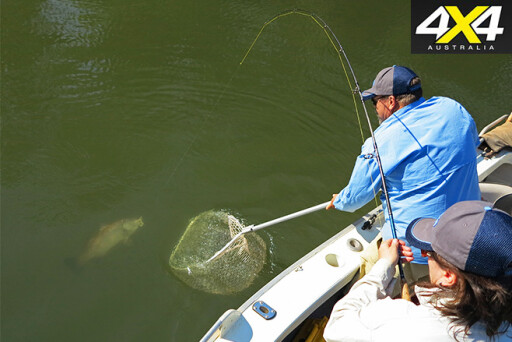
Stories about “the one that got away” are far too common in fishing circles.
A lot of these heartbreaking losses occur in the final few seconds of the encounter, when the fish is almost in the boat or on the bank. A great many of these tales of woe also seem to involve the use (or rather, misuse) of landing nets.
Securing a good fish with a landing net should be a dead-easy process, but it’s amazing how often it all goes wrong at that last moment. When a whopper fish eventually swims into view after an epic battle, it’s natural to experience a strong desire to heave the catch out of the water, or up onto the bank, as quickly as possible. This desire can easily lead to disaster, though.
A landing net is definitely the most common tool used to secure the catch, but many people make a mess of the netting process. The next trophy fish to be knocked from the hook by an overly enthusiastic net-wielder certainly won’t be the first.
The most important aspect of successfully using a landing net is to remember that securing a fish safely in such a device has absolutely nothing in common with catching butterflies. Forget about swooshing, swooping, dipping and scooping at a flailing, flapping fish. Instead, always follow these same three basic steps:
1. Place the net in the water so that the front of the hoop is well submerged and the back of the hoop (where the handle is connected) sits roughly flush with the surface.
2. Using the rod and line, bring the hooked fish to the net and swim it into the net head-first. If you’re fishing on your own, you’ll have to perform these actions yourself, holding the net handle in one hand and the rod in the other. If you need to reel in some more line during this process, tuck the net handle under your arm.
3. As soon as the fish’s head, and at least half of its body mass, are over the front of the net hoop and above the mesh, relax pressure on the line. Do this before you begin to lift the net from the water. This relaxation of pressure usually induces the fish to dive deeper into the net, and also relieves strain on the rod at a critical moment.
 Netting fish is such an important part of the whole angling process that I’m going to run through those instructions one more time: Submerge the net, bring the fish to the net, swim the catch into the net head first, reduce pressure on the line, smoothly lift the net.
Netting fish is such an important part of the whole angling process that I’m going to run through those instructions one more time: Submerge the net, bring the fish to the net, swim the catch into the net head first, reduce pressure on the line, smoothly lift the net.
Never chase a swimming fish with a net, nor attempt to net the fish tail-first. Such efforts almost always result in disaster, because any fish can swim much faster than you can move a submerged net through water (especially one of the modern, fish-friendly knotless or mesh varieties, just like the very-popular Shimano Environets).
The fish almost always evades capture if chased from behind with a net, often breaking the line or shedding the hook in the process.
Up to a certain point, a larger net with a wider hoop is easier to use and more efficient than a smaller net. Even a big landing net stops being useful, however, when dealing with fish over about 15 or 20kg. For better or worse, most of us don’t encounter too many fish that big.
If you’re an eternal optimist (like most anglers) you can always carry a gaff to deal with the real monsters. We’ll look at using those in a future instalment.

COMMENTS